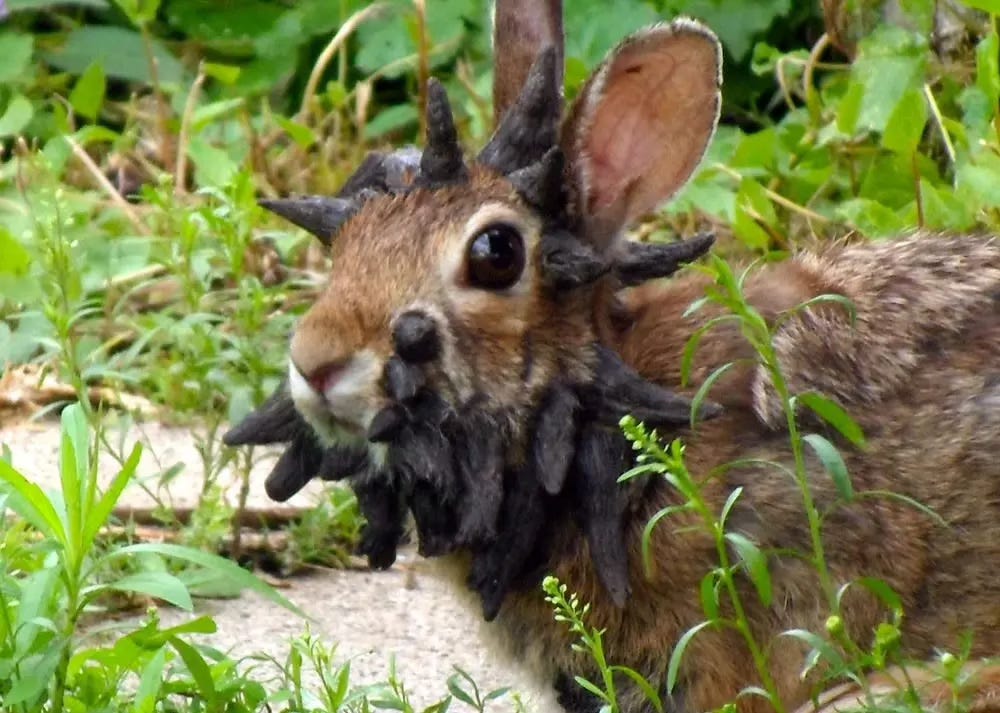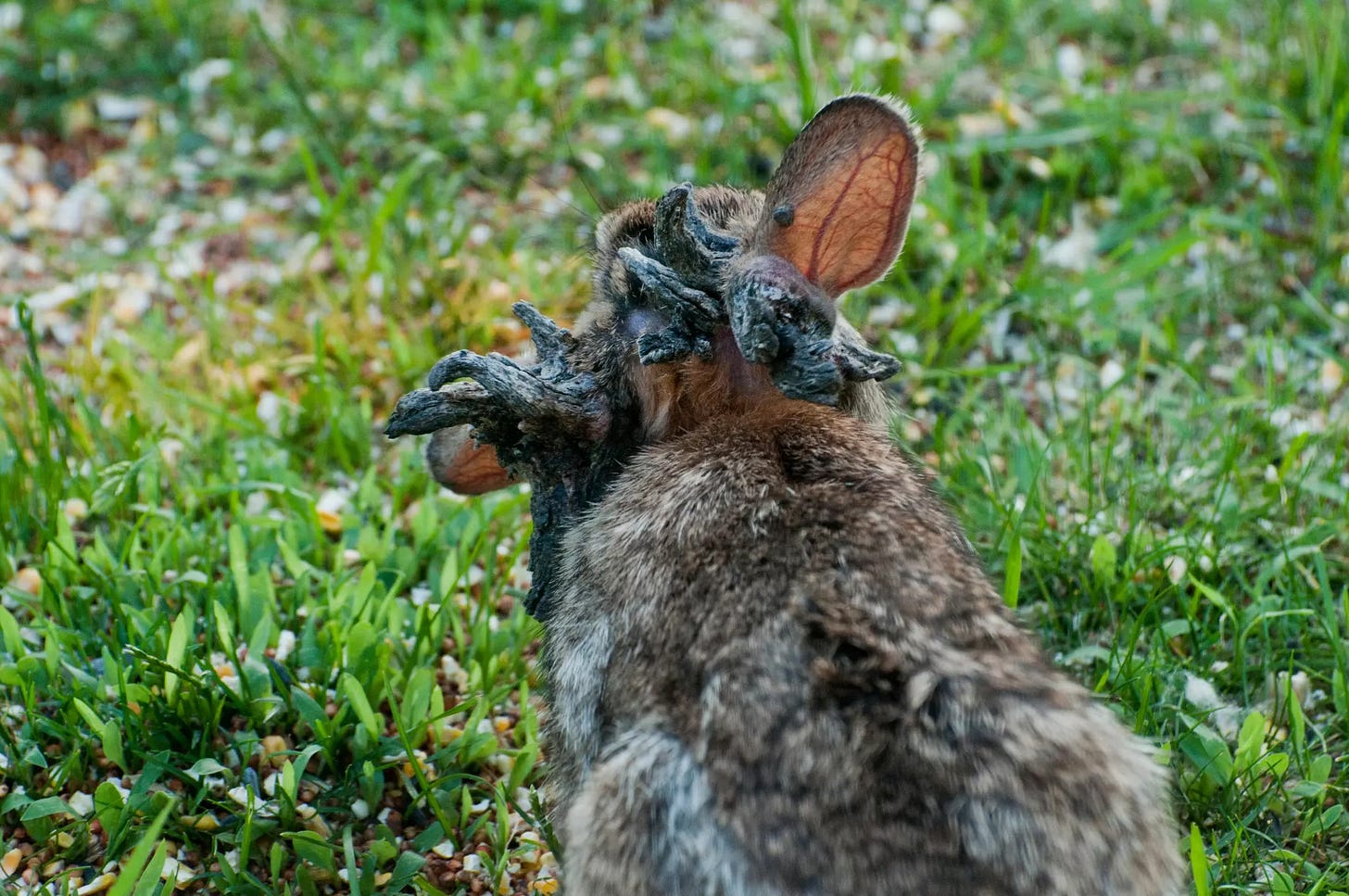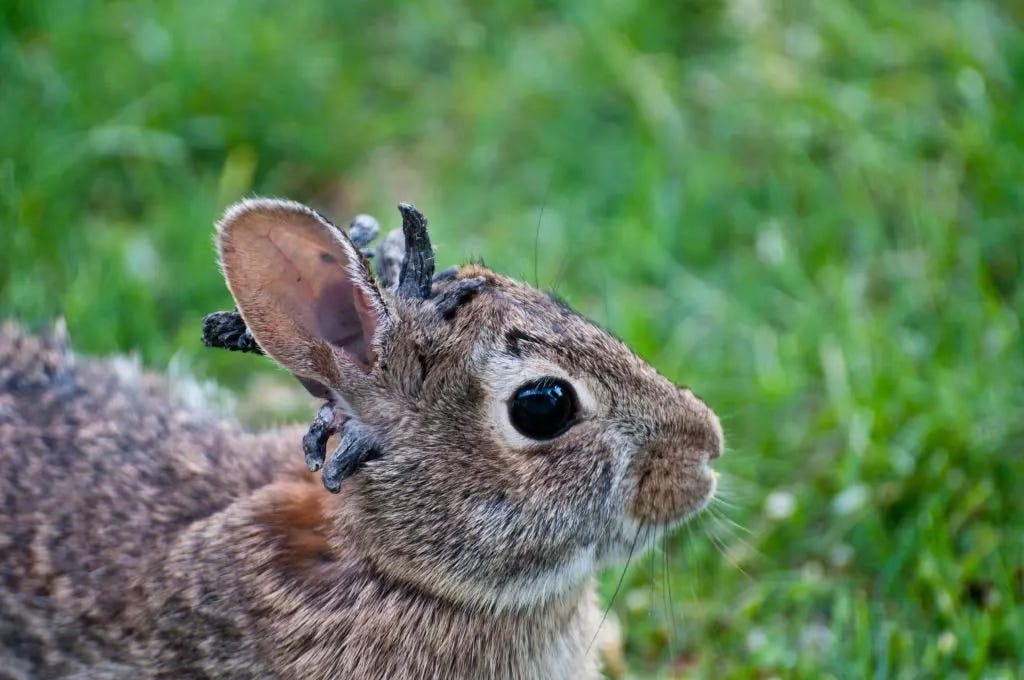From Jackalope Myth to “Frankenbunnies”: What’s Really Going On With Colorado’s Horned Rabbits
Colorado’s “Frankenbunnies” revive the jackalope legend as a real virus causes horn-like growths on wild rabbits—merging folklore, science, and rural curiosity.
A Folklore Creature Come to Life?
For generations, rural Americans have told stories of the jackalope—a mythical jackrabbit with antlers, said to roam the prairies and trick cowboys with its uncanny ability to mimic human voices. First popularized in the 1930s when a Wyoming taxidermist mounted deer antlers on a jackrabbit carcass, the jackalope became a quirky fixture of Western folklore, spawning postcards, souvenirs, and tall tales.
But in recent weeks, residents of Fort Collins, Colorado have reported sightings of rabbits with grotesque, horn-like protrusions jutting from their heads. Photos circulating online show black, needle-like growths sprouting from wild cottontails—an unsettling reminder of the jackalope legend. Locals dubbed them “Frankenstein bunnies” or “zombie rabbits,” sparking concern and fascination alike.
The Real Culprit: Shope Papillomavirus
Wildlife biologists have identified the cause: Shope papillomavirus, also known as cottontail rabbit papillomavirus.
The virus, spread by ticks, fleas, and mosquitoes, triggers wart-like tumors made of keratin on the rabbit’s head, face, or eyelids.
In some cases, these growths elongate into long, spike-like structures—eerily resembling horns or tentacles.
The condition is usually benign in wild rabbits. Most eventually recover when the growths fall off. However, if tumors block the animal’s mouth or eyes, it can cause starvation or blindness.
This virus was first studied in the 1930s by virologist Richard E. Shope, whose experiments helped link viruses to cancer research. Ironically, the same period also gave rise to the jackalope myth, blending science and folklore in ways that still echo today.
Harmless to Humans, But Not to Rabbits
Officials stress that the virus poses no risk to humans or other pets—it is rabbit-specific. Domestic rabbits, however, face higher risks: the papillomavirus can progress into malignant cancers, requiring veterinary treatment.
Colorado wildlife experts urge the public:
Do not touch or attempt to help affected rabbits.
Report sightings to local wildlife authorities.
Allow nature to take its course unless an animal appears to be suffering severely.
While shocking to see, these rabbits are not dangerous—they are simply another reminder of how disease and ecology shape wildlife in unexpected ways.
From Myth to Modern Curiosity
The jackalope legend may have started as a taxidermist’s prank, but real-life rabbits with Shope papillomavirus likely inspired such stories long before postcards and novelty mounts. Tales of horned hares appear in European folklore as early as the Middle Ages, suggesting that people across the world noticed—and mythologized—these strange viral growths.
Today, the internet has turned Fort Collins’ “Frankenbunnies” into viral stars, blending science, shock, and old-fashioned storytelling. For rural communities, they’re a living link between folklore and biology—a reminder that behind every myth may lie a kernel of truth.
The “horned rabbits” hopping around Colorado aren’t supernatural creatures. They’re victims of a virus, caught between folklore and modern science. Yet, in their eerie resemblance to the mythical jackalope, they reveal how rural imagination and natural oddities intertwine.
In the end, the jackalope isn’t just a kitschy roadside mascot. It’s a symbol of how humans process the strange, the unsettling, and the unexplained in nature—something that, in the age of “Frankenbunnies,” feels more real than ever.






